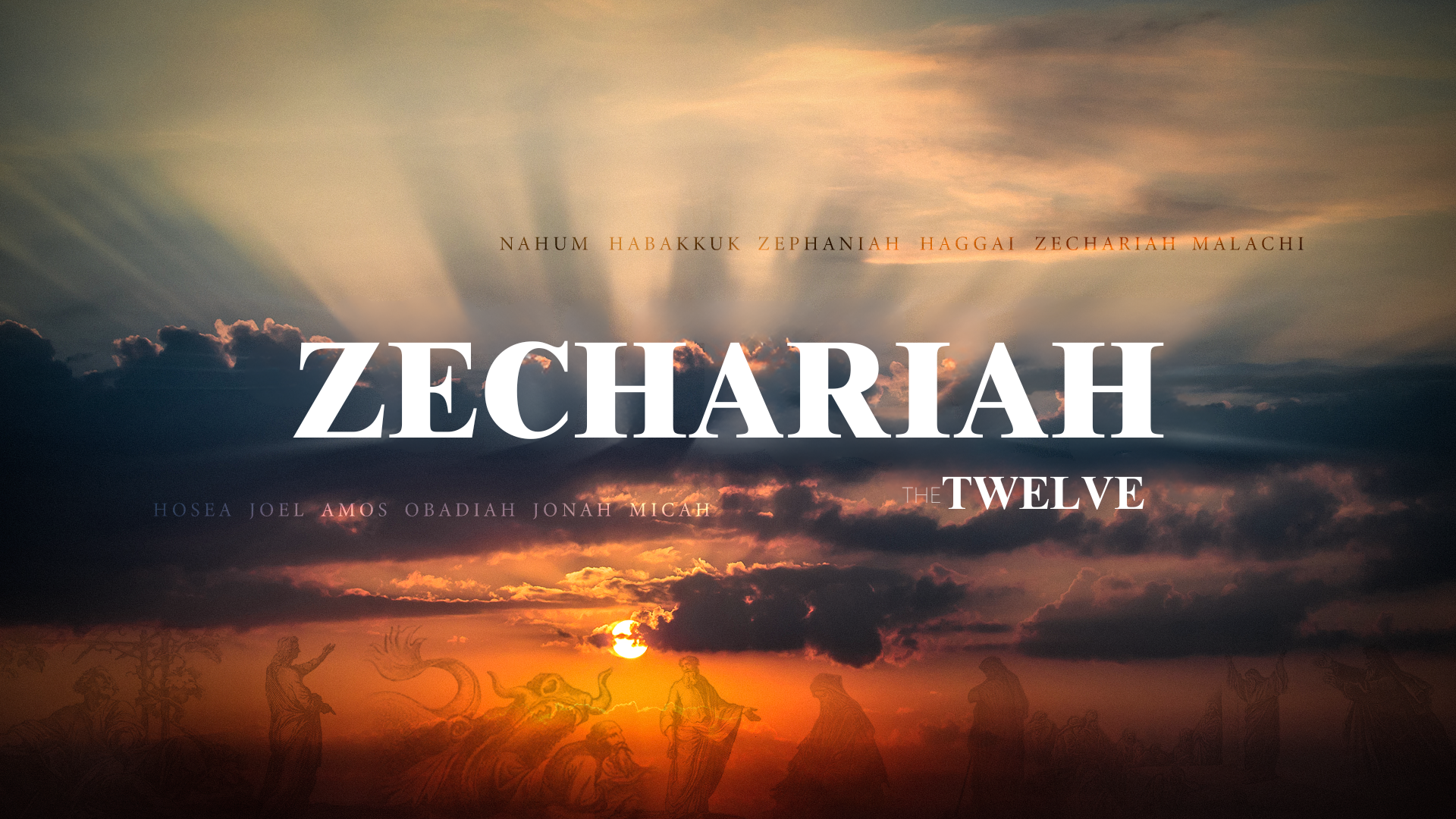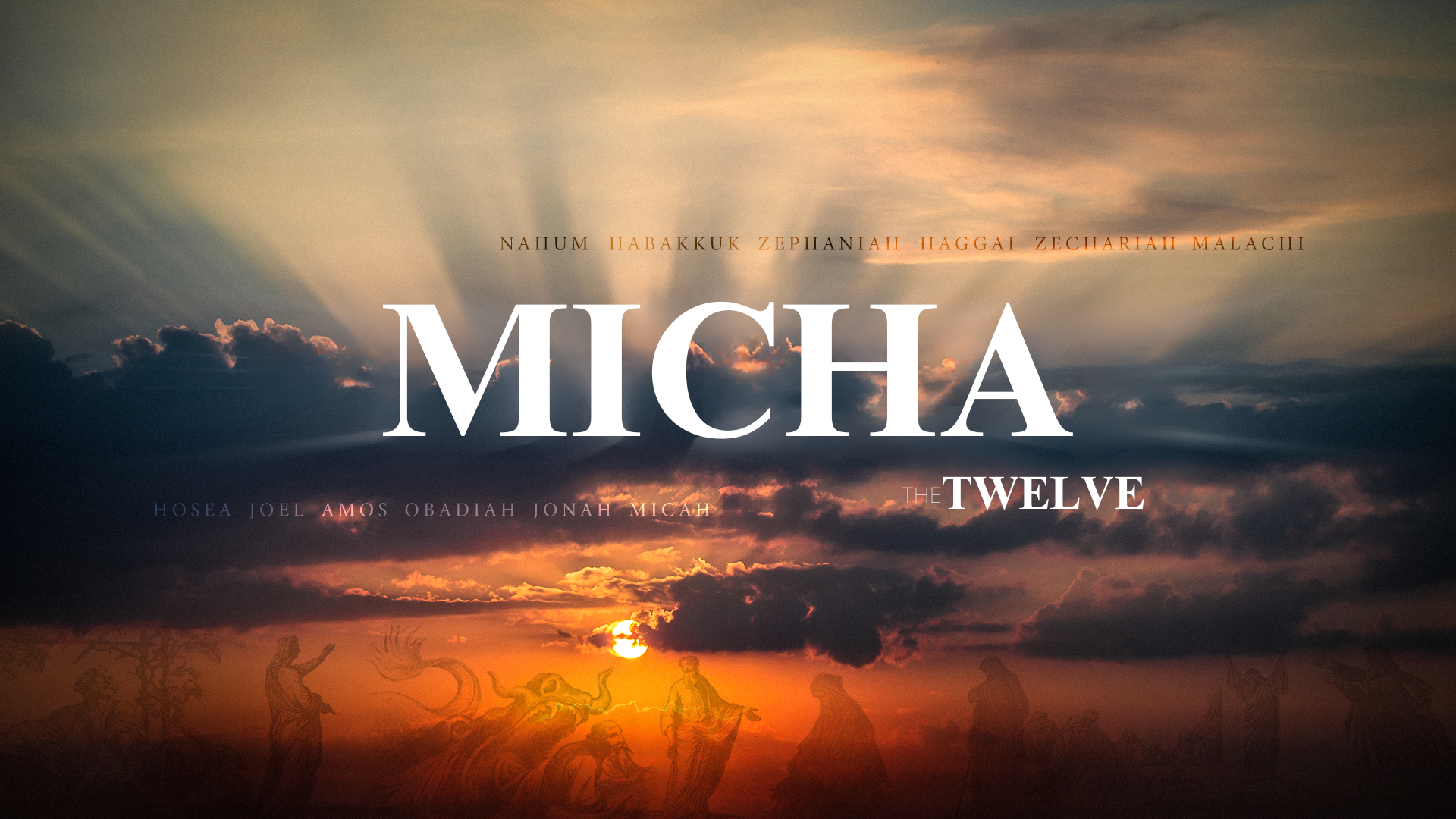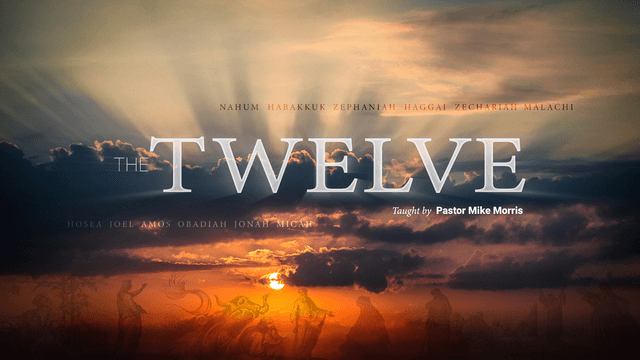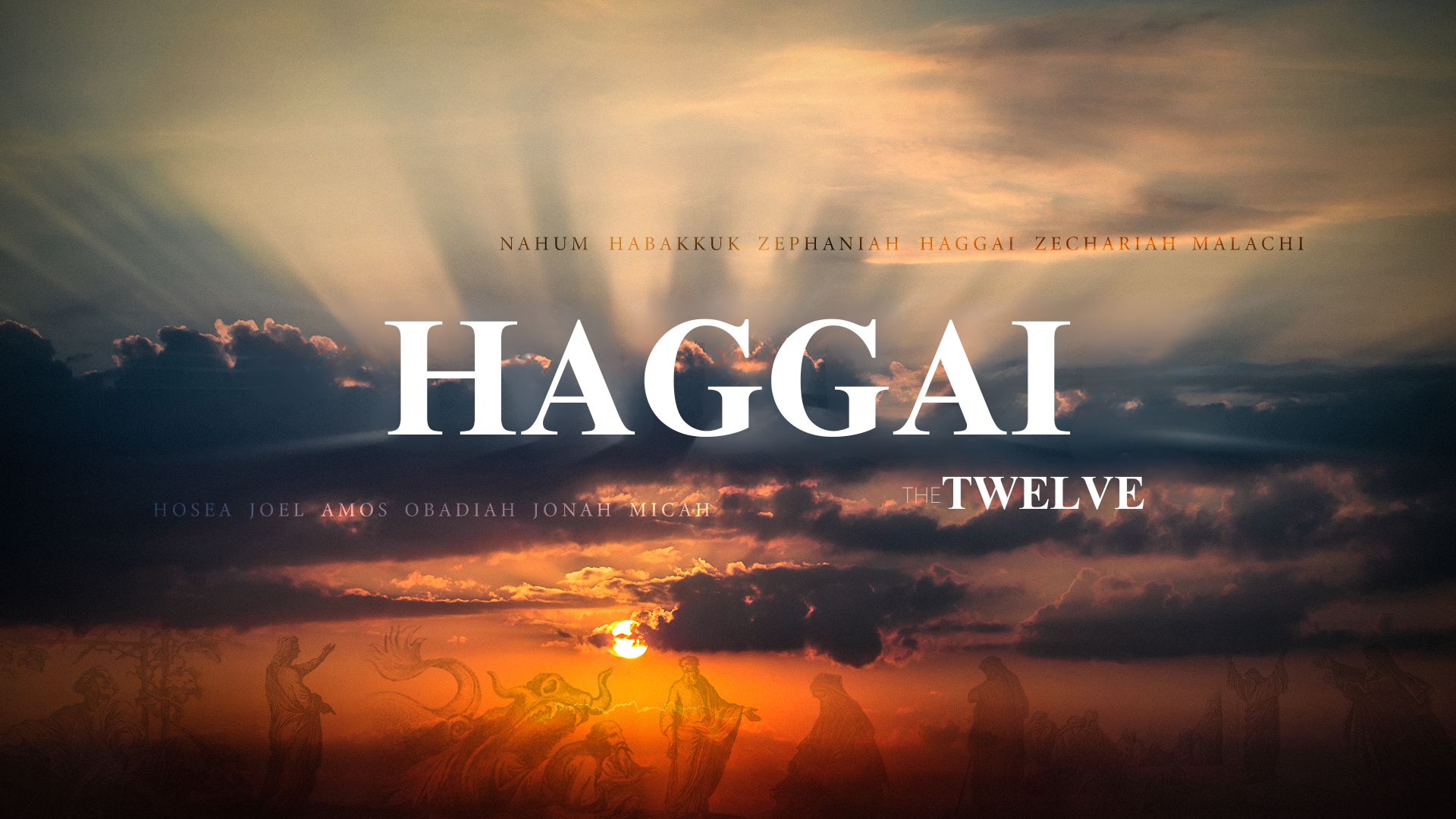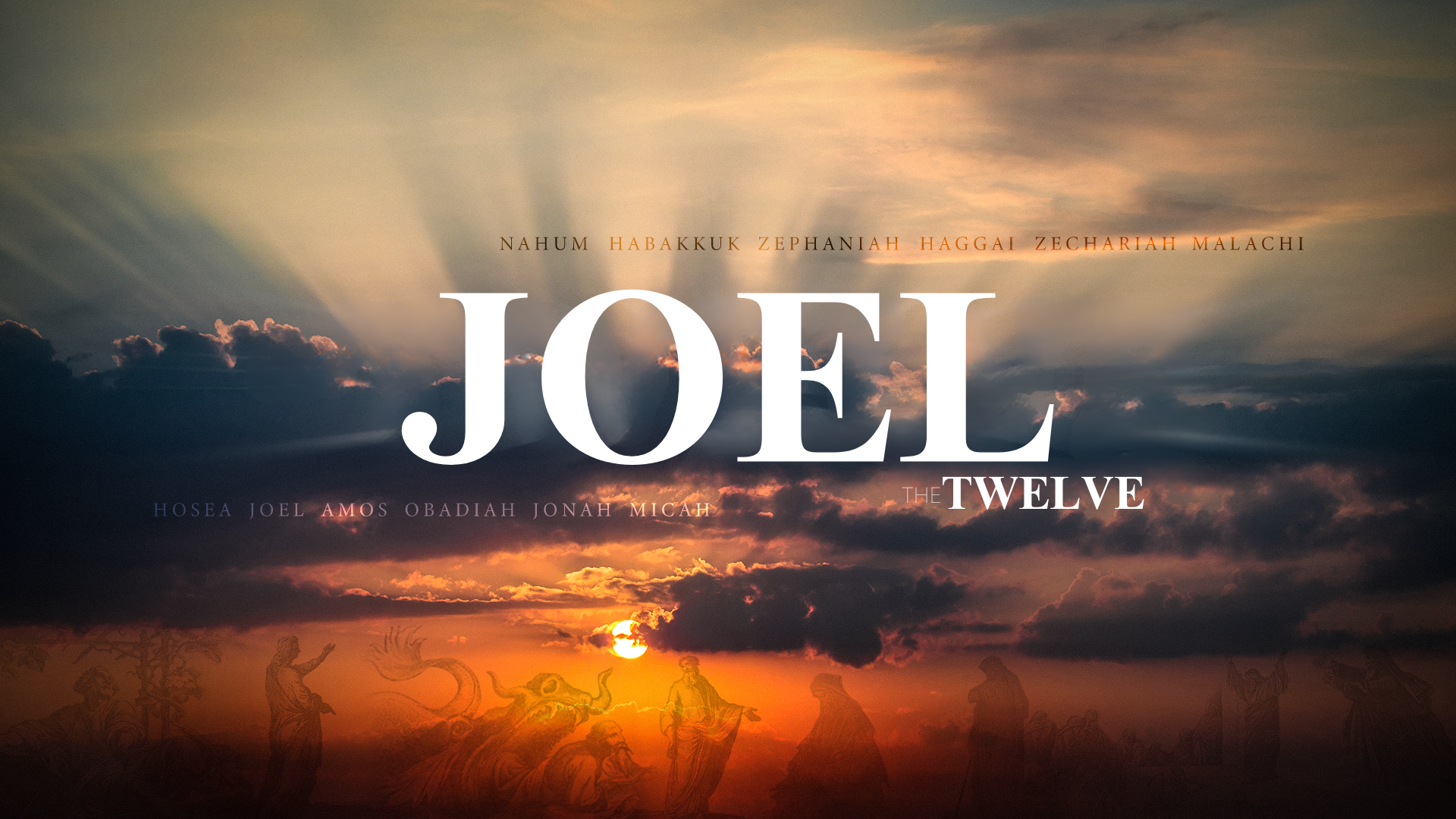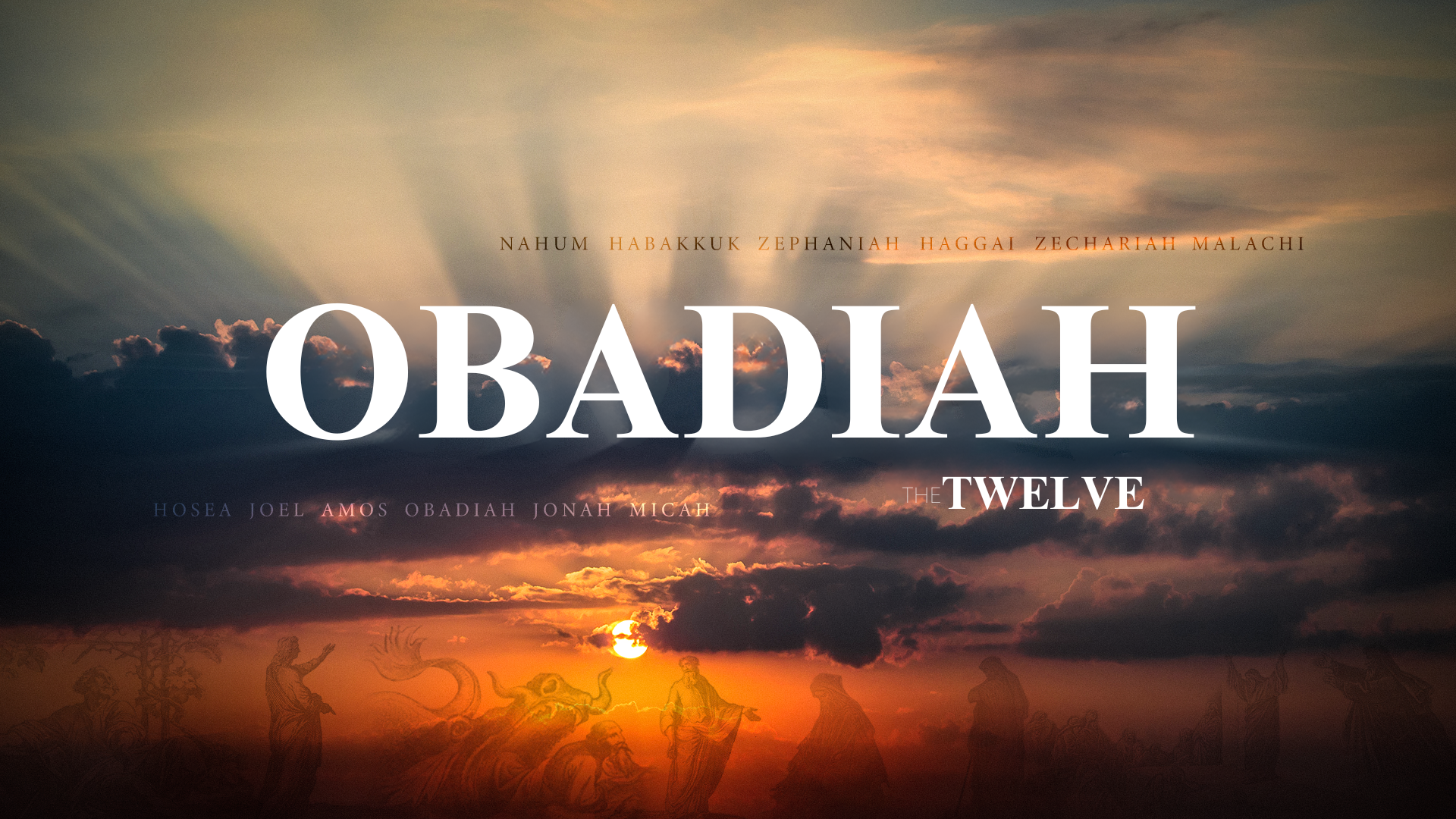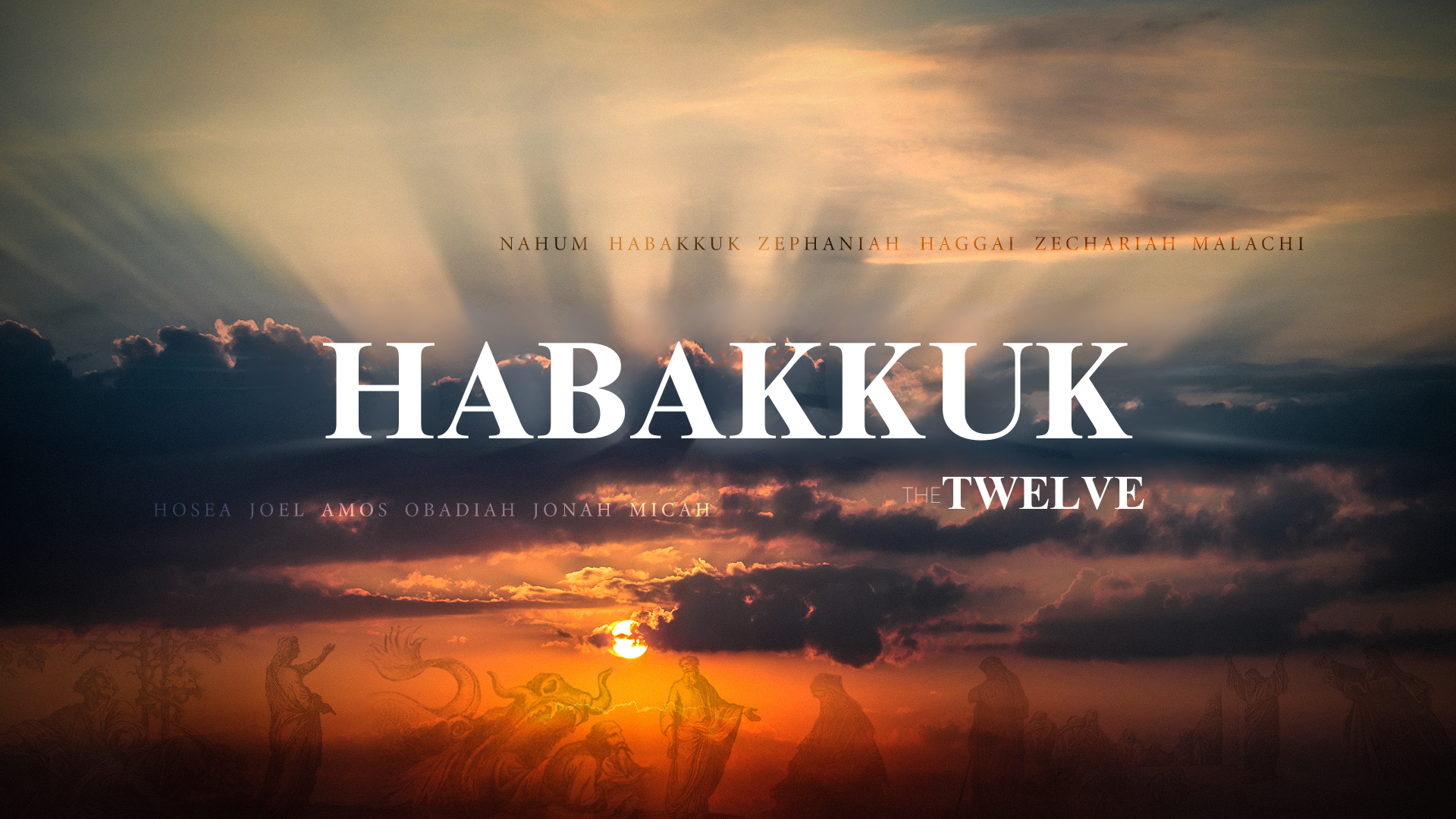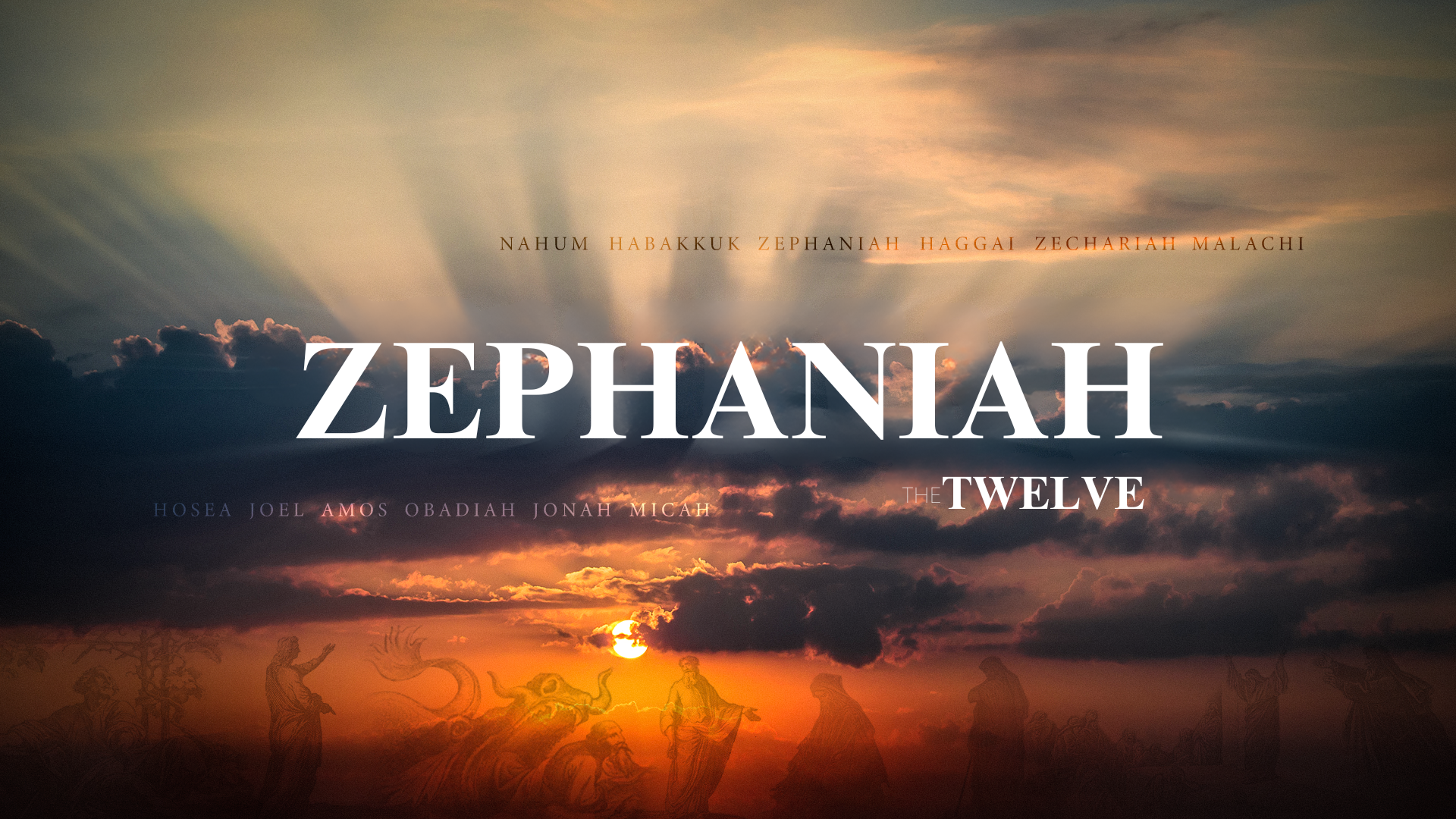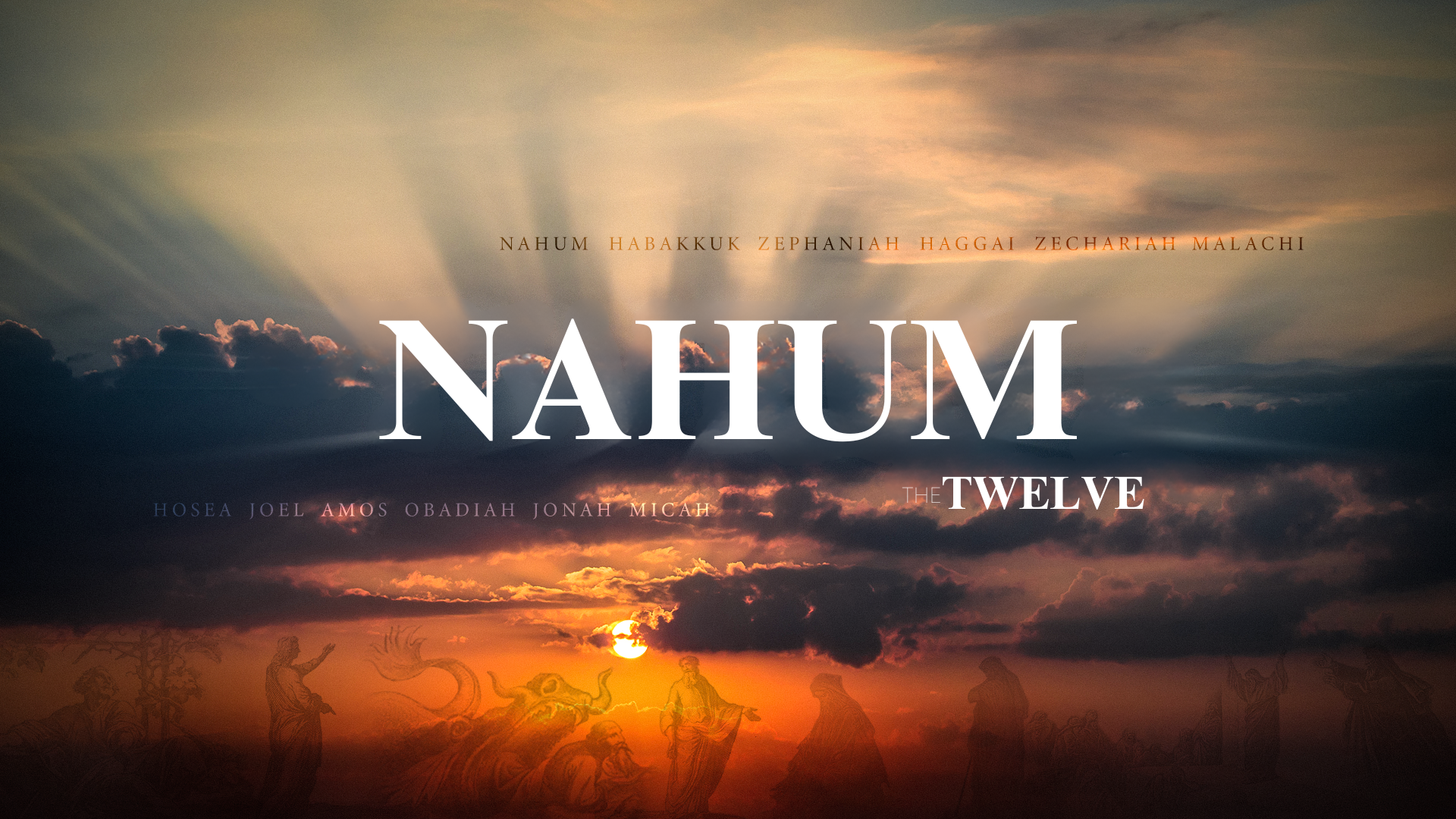MANUSCRIPT
Today we complete our study of the prophet Haggai. As we start, let’s set the book in context.
Let’s look at the timelines of the two Israelite nations in the time of the divided monarchy, Israel in the north and Judah in the south.
The prophetic voice ceased in the north in 722 BC, as the Assyrians crushed Israel, taking them into captivity, an exile from which they never returned.
Judah endured another 135 years before falling to the Babylonians, the nation that conquered the Assyrians. Our studies of Jonah through the first chapter of Haggai are available on our website, vbvf.org, under the “Old Testament” tile. Look for the series entitled “The Twelve”.
In addition to the historical setting, let’s review some other important features.
Author: the preacher of the book is Haggai. Other than his name, we don’t know anything else about him. The book is a compilation of four spoken sermons, so there must have been a compiler or chronicler.
Date: the entire book is recorded as happening between August 29th and December 18th, 520 BC. It’s the most precisely dated book in the Bible.
Content: Haggai is the first of the three post-exilic, prophetic books, the next two being Zechariah and Malachi. All three focus on the challenges facing the people of Judah as they struggle to establish themselves and the worship of God in the land. the prophecies of Haggai are intended to encourage the leaders and the people to commit themselves to the re-establishment of Temple construction and worship in Jerusalem. there are four sermons in total, and we’ll look at the final three sermons today.
Historical context: as the book opens, Babylon has been conquered by Cyrus the Great, leader of the Medeo-Persian Empire, who is ruling the largest empire the ancient Near East had ever seen, an empire that included the land of Palestine, called by the Persians the “land beyond the river”.the governor of Judah, appointed by the Persians, is Zerubbabel, and the high priest is Joshua.
Let’s take a quick look at our post-exilic timeline to see the events surrounding the book. Cyrus ruled the Medeo-Persian empire from 559 BC to 530 BC and conquered Babylon in 539 BC, almost 50 years into the Judean exile.in 538 BC, Cyrus decreed that the Jews were to return to Jerusalem and rebuild the house of the Lord, as recorded in Ezra 1.1. The second decree of Darius to rebuild the Temple is recorded in Ezra 6.1-12, and in 515 BC, the Second Temple was completed.
Structure: the book contains four prophecies or sermons, each carefully dated. Each is a short, pointed truth to encourage the people to finish the work they had begun when they returned to Judah. to remember who they were and why Yahweh had brought them back to the land. This narrative continues in the next prophetic book, Zechariah, particularly chapters one through eight, and Malachi. I encourage you to read these two prophetic books alongside Ezra and Nehemiah to see the full scope of God’s work in returning the people of Judah to their land.
Some might read the book of Haggai and think it’s just about God pushing the people of Judea to get to work on the Temple, but there is much more here than that. as I have studied the book in depth, I’ve heard the voice of God the Father as a father, as a parent teaching, guiding, and challenging His children toward purpose and holiness; in the first chapter, He reveals to them their self-absorbed concerns for their own houses while God’s house lay in ruins, and admonishes them to consider their ways as He holds up a mirror to them for them to accurately see how they are living; and the people respond to God’s gentle but direct conviction as we’ll see in the second chapter, God turns from rebuke and challenge to encouragement. Haggai is different from nearly all the other prophetic books, for many reasons, but it’s different in many good and encouraging ways. as we’ll see today, God moves the leaders and the people from self-focused apathy to wholehearted commitment; as God speaks through Haggai, the entire Judean community rises to a renewed and energized sense of being God’s unique people and to their mission in their world.it’s far more than a collection of ancient sermons, it’s a short story for the ages, a perfectly framed picture of the powerful movement of God in and through His people to bring about His kingdom purposes. we begin at 2.1-9.
The Call to Be Strong: Sermon #2
Let’s set the stage. The first sermon was on August 29th, and by September 22nd, work had begun on the Temple. All of that happened in the sixth month by the Jewish calendar. now it’s the 21st day of the seventh month, or October 17th by our calendars.
In the seventh month, on the twenty-first day of the month, the word of the Lord came by the hand of Haggai the prophet: 2 “Speak now to Zerubbabel the son of Shealtiel, governor of Judah, and to Joshua the son of Jehozadak, the high priest, and to all the remnant of the people, and say, 3 ‘Who is left among you who saw this house in its former glory? How do you see it now? Is it not as nothing in your eyes?
This passage addresses everyone in the nation. There would have been very few left who would have personally seen and remembered Solomon’s Temple, which had been destroyed 66 years before. those who had would know that the foundation of this new temple was as nothing compared to Solomon’s Temple. They would weep as they saw the temple left in piles of burned stone. In their eyes, this work could never really amount to anything, certainly not on the scale of greatness and grandeur and breathtaking beauty of Solomon’s Temple. The Lord already knew their hearts, and He rightly said that they saw it as nothing.
But was their work on the temple, which God was so interested in, really nothing? We’ll see.
This next passage is the heart of the chapter. two admonitions from the Lord followed by three statements of great encouragement.
4 Yet now be strong, O Zerubbabel, declares the Lord. Be strong, O Joshua, son of Jehozadak, the high priest. Be strong, all you people of the land, declares the Lord. Work, for I am with you, declares the Lord of hosts, 5 according to the covenant that I made with you when you came out of Egypt. My Spirit remains (stands) in your midst. Fear not.
First, the Lord’s admonition is to “Be strong,” to encourage them in their moment, surrounded by enemies who were opposing the work and hindered by the scarcity of resources; God speaks directly to them in their fear and discouragement with a clear and challenging imperative, repeated three times.”Be Strong!” He knew they felt weak in the face of overwhelming odds. The call was intended to bring back to their minds their ancestor Joshua, who was also told three times by the Lord, “be strong and courageous”.
Just as Joshua and the generation of Israelites who crossed over into the Promised Land needed strength and courage, so too did the people of Judah as they faced their own challenges in their own homeland.
Second, after they summoned up their strength, they were to get to work. There was much to do as they restarted the temple-building effort and eventually expanded that to the city walls and interior. There were materials to collect, workers to train and employ, skills to learn and perfect. it wouldn’t all happen in a day, but in His power and with their persistence they would get it done.
This small, beleaguered remnant had to wonder how they could be strong and tackle the enormous effort that faced them.the Lord gives them three sustaining reasons, three sources of strength that would carry them through the difficulties ahead.
First, “I am with you.” In God’s service, we are never alone. throughout the Scriptures, He promises to be with His people, including in Genesis, Isaiah, Jeremiah, Matthew, John, and Acts. This close identification between Yahweh and His people is a fundamental, foundational truth throughout the Word, and here it is essential to jumpstart the people’s work on the temple. that promise of presence is based on the covenant between God and His people as He brought them out of Egypt. In other words, God sees His presence as a continuing work in the relationship between Himself and His people, a work which continues even today as God works in and among His churches.
Second, “My Spirit remains (stands) in your midst.” Now the focus shifts from Yahweh to Yahweh’s Spirit. While the Holy Spirit is not mentioned often in the OT, this is one of the exceptions. God pledges that His Spirit would remain – stand – with His people. Whenever He was needed by the community, God’s Spirit would be there. He would not withdraw again, as He had in Ezekiel’s day before the Babylonian exile, but He would remain in the midst of His people, for their good and God’s glory.
Third, He tells them, “Fear not.” Again, this phrase or similar phrases are used numerous times throughout both the OT and NT. Most of the time “Fear not” or “do not be afraid” is used in the NT, for example, it is almost always heard from the lips of Jesus Himself. our Lord knows that we are quick to see obstacles and draw back in fear, even in the face of strong assurances. recall the response of the spies returned from the Promised Land. They heard the promise of God that He would lead them into the land and drive out the Canaanites before them, but most of the spies returned and said it was impossible. As humans, we are quick to fear, so the Lord knows to encourage us by reminding us not to be afraid. as we trust in Him, we need not fear anyone or anything.
While there are many passages we could look to, I think Isaiah 41.10 says it well, reinforcing Haggai’s prophecy.
10 fear not, for I am with you;
be not dismayed, for I am your God;
I will strengthen you, I will help you,
I will uphold you with my righteous right hand.
Now the Lord offers another assurance to the people of Judah.
6 For thus says the Lord of hosts: Yet once more, in a little while, I will shake the heavens and the earth and the sea and the dry land. 7 And I will shake all nations, so that the treasures of all nations shall come in, and I will fill this house with glory, says the Lord of hosts. 8 The silver is mine, and the gold is mine, declares the Lord of hosts.
God declares His purpose to draw into the Second Temple all that is needed to adorn His house with glory.it’s true that historically, empires such as the Assyrians and the Babylonians pillaged the treasures of the temple and the city. but the fact is that ultimately, all things, the heavens and the earth and the sea and the dry land and all that is in them, belongs to the Almighty God. Job 41.11 says Whatever is under the whole heaven is mine. There is never a lack of resources for God’s work. when He determines to fill His house with glory, He will most certainly do it. Let us never be slack in asking the Lord what we need to accomplish His purposes. but never forget that the building and the treasures it holds are but a small part of the glory and beauty of God’s house, for the true and eternal glory of God’s house is the presence of God Himself. and that’s true of churches in our day, too.
9 The latter glory of this house shall be greater than the former, says the Lord of hosts. And in this place I will give peace, declares the Lord of hosts.’”
The Lord now refers back to the beginning of this passage when He asked the oldest among the people how they saw the new temple. though the people saw it as small, God says that the glory that would fill this second temple would be greater even than the glory of Solomon’s temple. Their work was not a small work, it was significant and important. and the Lord of Hosts would fill His house with shalom – wellness, wholeness, and the absence of conflict, and strife.
The Call to Holiness: Sermon #3
It’s now about two months later, December 18th, 520 BC.the point of this brief sermon is this: spiritual defilement in rejection of God’s holy standards will bring about divine judgment, but when the people positively respond to God’s corrective actions, He will indeed bless them.
10 On the twenty-fourth day of the ninth month, in the second year of Darius, the word of the Lord came by Haggai the prophet, 11 “Thus says the Lord of hosts: Ask the priests about the law: 12 ‘If someone carries holy meat in the fold of his garment and touches with his fold bread or stew or wine or oil or any kind of food, does it become holy?’” The priests answered and said, “No.” 13 Then Haggai said, “If someone who is unclean by contact with a dead body touches any of these, does it become unclean?” The priests answered and said, “It does become unclean.” 14 Then Haggai answered and said, “So is it with this people, and with this nation before me, declares the Lord, and so with every work of their hands. And what they offer there is unclean. 15 Now then, consider from this day onward. Before stone was placed upon stone in the temple of the Lord, 16 how did you fare? When one came to a heap of twenty measures, there were but ten. When one came to the wine vat to draw fifty measures, there were but twenty. 17 I struck you and all the products of your toil with blight and with mildew and with hail, yet you did not turn to me, declares the Lord. 18 Consider from this day onward, from the twenty-fourth day of the ninth month. Since the day that the foundation of the Lord's temple was laid, consider: 19 Is the seed yet in the barn? Indeed, the vine, the fig tree, the pomegranate, and the olive tree have yielded nothing. But from this day on I will bless you.”
This passage is an unusual conversation about Levitical priestly rules. the point of the conversation is not about meat and garments and dead bodies, and the communicability and incommunicability of holiness or impurity. the point is about the spiritual condition of God’s people.
“So is it with this people, and with this nation before me, declares the Lord, and so with every work of their hands. And what they offer there is unclean. The people of Judah were learning a lesson that must be learned and relearned by God’s people in every place and every age. When we fail to consistently seek a righteous, holy, enduring relationship with the Lord, we should expect His redemptive judgment and look to see how He is getting our attention. Haggai reminds them to consider their ways, just as he did in chapter one, in hopes of turning their hearts back to the Lord.
But the Lord still sees some signs of genuine repentance and heart response in the people that cause Him to pledge His future blessing. from this day on I will bless you.”
The Call to Prepare for Messiah: Sermon #4
Haggai now receives a second word from the Lord on the same day, December 18th. This is his final sermon. Look for how the Lord points forward in time beyond Zerubbabel to the culmination of the royal Davidic line, the Messiah. Let’s see what the Lord of Hosts says.
20 The word of the Lord came a second time to Haggai on the twenty-fourth day of the month, 21 “Speak to Zerubbabel, governor of Judah, saying, I am about to shake the heavens and the earth, 22 and to overthrow the throne of kingdoms. I am about to destroy the strength of the kingdoms of the nations, and overthrow the chariots and their riders. And the horses and their riders shall go down, every one by the sword of his brother. 23 On that day, declares the Lord of hosts, I will take you, O Zerubbabel my servant, the son of Shealtiel, declares the Lord, and make you like a signet ring, for I have chosen you, declares the Lord of hosts.”
This final brief sermon is spoken in two parts: verses 20 through 22 and verse 23. the message is strictly given to Zerubbabel, as it is a royal matter, not a priestly matter. the content of the first passage is striking. God speaks in the first person, declaring His purpose to suddenly and violently intervene in history, through earthquakes, political upheaval, and disaster; He uses language that reminds us of the destruction of Sodom and Gomorrah, or the Egyptians in the Red Sea. This has a pronounced eschatological, even apocalyptic, feel to it.
Then the Lord declares “on that day” – the Day of the Lord – saying, I will take you, O Zerubbabel my servant, the son of Shealtiel, declares the Lord, and make you like a signet ring, for I have chosen you, declares the Lord of hosts.”This description is extraordinary. This kind of language is very unusual, even unique in all the OT; it’s the only known instance when an eschatological reference of this importance is applied to a historical figure like Zerubbabel. The phrase “my servant” used here is also used of David and those in the Davidic line, and conveys great blessing and importance. the culmination of the statement is found in the imagery of the signet ring, which is mentioned throughout the OT as a sign of royal and even divine authority. There are almost no details offered here, but the image is a powerful one.
But here’s the thought-provoking thing: there has been no historical fulfillment of the prophesied destruction of the nations, in the ancient Near East or beyond, in verses 20 through 22, and no fulfillment of the extraordinary language of verse 23 applied to the Judean governor, Zerubbabel. he faded from history shortly after this sermon was recorded. we don’t know if he ruled for a longer period, was deposed by the Persians, or any other details of his later life.
So what are we to make of this? One interpretation stands out as the most likely. In this prophecy, Zerubbabel, a descendent of King David, stands in the Davidic line as a representative of the greater coming Messiah, who has all authority and power and will bring about both the destruction of the wicked and the establishment of the messianic kingdom.
Commentator Richard Taylor captures the thought well.”A better understanding of this matter lies in viewing Zerubbabel as a representative figure. Just as the name David could carry associations with a royal figure who is in the Davidic line but who transcends the historical figure of David, so it is with Zerubbabel. Like many other Old Testament promises, these predictions had both a near dimension and a more distant one. Haggai’s promises given to Zerubbabel, while true of him in a limited way, find their ultimate expression in a greater Zerubbabel who was to come.40 It is not surprising that in the genealogies of Jesus provided by Matthew and Luke, Zerubbabel is mentioned as part of the messianic line.”
Application
Let’s think back through this chapter and see what we can draw out for our situation.
This fellowship has faced and continues to face challenges and opportunities. Right now we are moving toward a new season of ministry aided by a new physical home and building program to which the Lord is leading us, and the admonitions and encouragement the Lord gave the people of Judah apply to us today as well. Hear these words in our present situation and listen for the Lord’s voice.
Our God encourages us to be strong, to rest in His strength, even when we might feel weak and unprepared for what’s facing us.
He also admonishes us to get to work. When the Lord places a task on His people, He will provide all we need to accomplish it.
Trust that He is with us in all circumstances and at all times.
Seek out His Spirit, for He stands in the midst of His people.
Don’t be afraid. as Psalm 56.11 says, in God I trust; I shall not be afraid.
What can man do to me?
All things belong to our God. Let’s ask Him for what we need to serve Him.
Don’t overlook small things. May we remain faithful in all that to which He has called us?
Never forget that how we live matters to our Lord. we are to be holy even as He is.
And most importantly, keep our eyes on Jesus our Messiah, the author and finisher of our faith. He is present with us now and He is coming again. And when He comes, may He find us engaged in worship and service in His Name!

Taught by Mike Morris
Associate Pastor of Verse By Verse Fellowship
The Twelve Series
